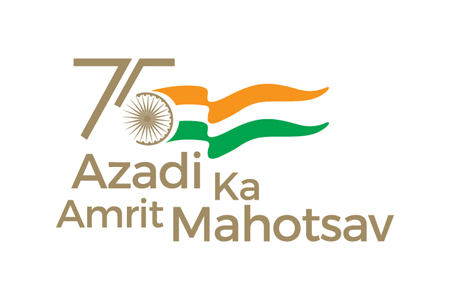- Approved by AICTE & Affiliated to the University of Mumbai | Accredited With B++ Grade by NAAC | Choice Code : 311310210
BUSINESS QUIZ – MSME SECTOR

MARATHA MANDIR’s
Babasaheb Gawde Institute of Management Studies
Business Quiz – MSME
13th Nov 2017
- Small and medium scale enterprises (SMEs) are understood in India as enterprises where the investment in plant and machinery or equipments is between ————–
A) Rs. 10 lacs to 25 lacs B) Rs. 25 lakhs to Rs. 10 crores C) Rs. 50 lacs to 5 crores D) Rs. 50 Lacs to Rs. 10 crores - The current Minister of Micro, Small and Medium Enterprises is ————–since 03 September 2017.
A) Giriraj Singh B) Umashankar Ray C) Vidyapati Kumat D) Uma Bharati - In the classification of MSME sector micro enterprises have investments in plant and machinery up to Rs.————-
A) 10 lacs B) 50 lacs C) 25 lacs D) 1 crore - In the 2017 budget, the small scale industries, especially, were jubilant as finance minister Arun Jaitley reduced the Income Tax return from 30 per cent to ———–per cent for industries having turnover up to Rs 50 crore.
A) 20 per cent B) 25 per cent C) 15 per cent D) none of these - A medium enterprise is an enterprise where the investment in plant and machinery is more than Rs.——— crore but does not exceed Rs.10 crore.
A) 2 crores B) 4 crores C) more than 5 cores D) more than 8 crores - ——————— acts as a Principal Financial Institution for the Promotion, Financing and Development of the Micro, Small and Medium Enterprise (MSME) sector.
A) Mudra Bank B) RBI C) SBI D) SIDBI (Small Industries Development Bank of India) - is a full service credit rating agency exclusively set up for micro, small and medium enterprises (MSME) in India.
A) Dun & Bradstreet Information B) ADFIAP C) SMERA D) MUDRA - The MUDRA banks were set up under the ————— scheme. It will provide its services to small entrepreneurs outside the service area of regular banks, by using last miles agents.
A) Jan-Gana yojana B) Atalbihari Vitta Yojana C) Pradhan Mantri MUDRA Yojana D) None of these - The term “financial inclusion” has gained importance since the early 2000s, a result of identifying financial exclusion and its direct correlation to ————-
A) Poverty B) Malnutrition C) Jobs D) Education - The MSME sector in India has maintained a consistent growth rate of ———–per cent.
A) 8% B) 10% C) 5 % D) 7 % - The MSME sector employs about ————-% workforce of India, which is roughly 6 crore people.
A) 30% B) 40% C) 45 % D) 50% - Generally, MSME contributes to ————-% exports from India.
A) 20% B) 25% C) 30% D) 40% - As per one of the KPMG research reports (in 2013) where BCG surveyed 4000 SMEs in five countries, it found that nearly ————% of SMEs in India have no access to the Internet, compared with only 22% of SMEs in China and 5% of SMEs in the US. Though, initiatives like ‘Google My Business’ are aiming at getting 20 million SMEs online in the next three years.
A) 60% B) 70% C) 80% D) 90% - One of the biggest threats Indian MSME sector faces is —————
A) Lack of financial assistance B) Lack of Marketing Skills C) Quality of products still to meet International standards D) lack of bilateral trade - Out of which of these activities one of it is supporting growth of MSME sector in India?
A) ISO Standards B) Management Education C) IT revolution D) Cluster based activities - In 2017-18, India jumped up ———–marks into the top 100 rankings on the World Bank’s ‘ease of doing business’ index, thanks to major improvements in indicators such as resolving insolvency, paying taxes, protecting minority investors and getting credit.
A) 20 B) 30 C) 33 D) 39 - Economies are ranked on their ease of doing business by World Bank. A high ease of doing business ranking means ————-
A) the regulatory environment in a country is more conducive to the starting and operation of a local firm B) the regulatory environment in a country does lesser checks on parameters of doing business C) the regulatory environment can be managed very easily in a country while doing business D) All of these - The Doing Business Report (DB) is a study elaborated by the World Bank Group since 2003 every year that is aimed to measure the costs to firms of business regulations in —————countries.
A) 150 countries B) 200 countries C) 190 countries D) 220 countries - The Grameen Bank is a micro finance organisation founded in ————–It makes small loans to the impoverished without requiring collateral.
A) India B) Bangladesh C) Pakistan D) Sri Lanka - Grameen Bank originated in 1976, in the work of —————– at University of Chittagong, who launched a research project to study how to design a credit delivery system to provide banking services to the rural poor.
A) Prof. Muhammad Yunus B) Prof. Umar Chapra C) Prof. Mufti Muhammaed Taqui D) Prof. Shaikh Abdul Sattar
Answers:
|
1 |
2 |
3 |
4 |
5 |
6 |
7 |
8 |
9 |
10 |
11 |
12 |
13 |
14 |
15 |
16 |
17 |
18 |
19 |
20 |
|
B |
A |
C |
B |
C |
D |
C |
A |
A |
B |
B |
D |
D |
C |
D |
B |
A |
C |
B |
A |

